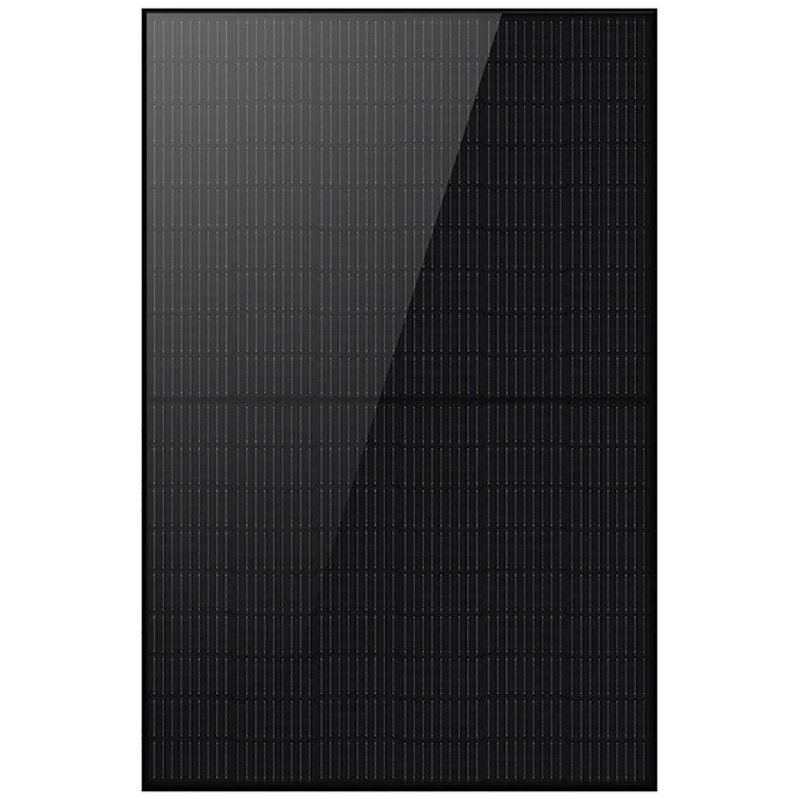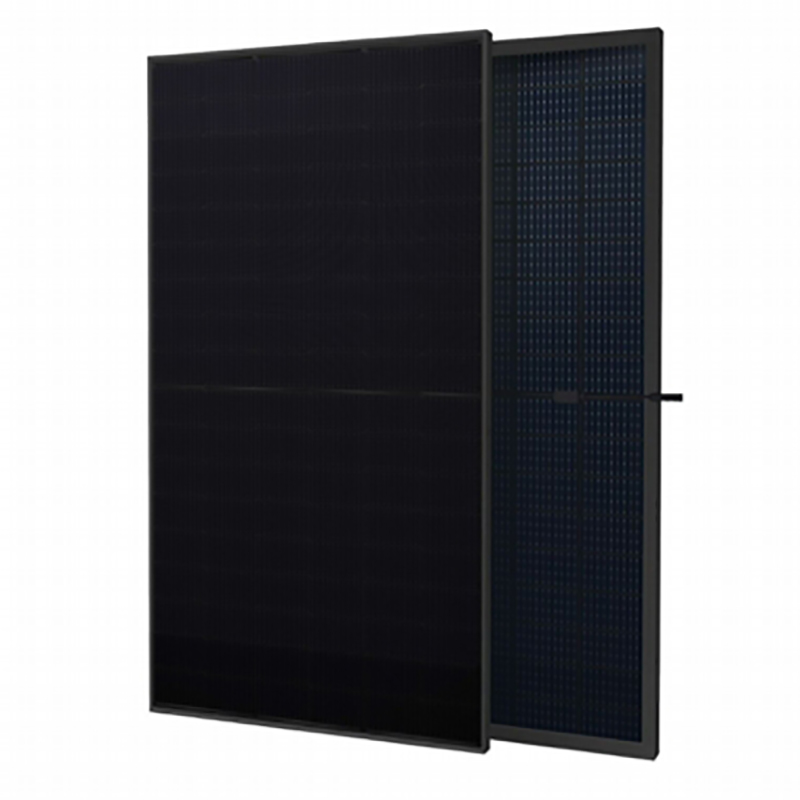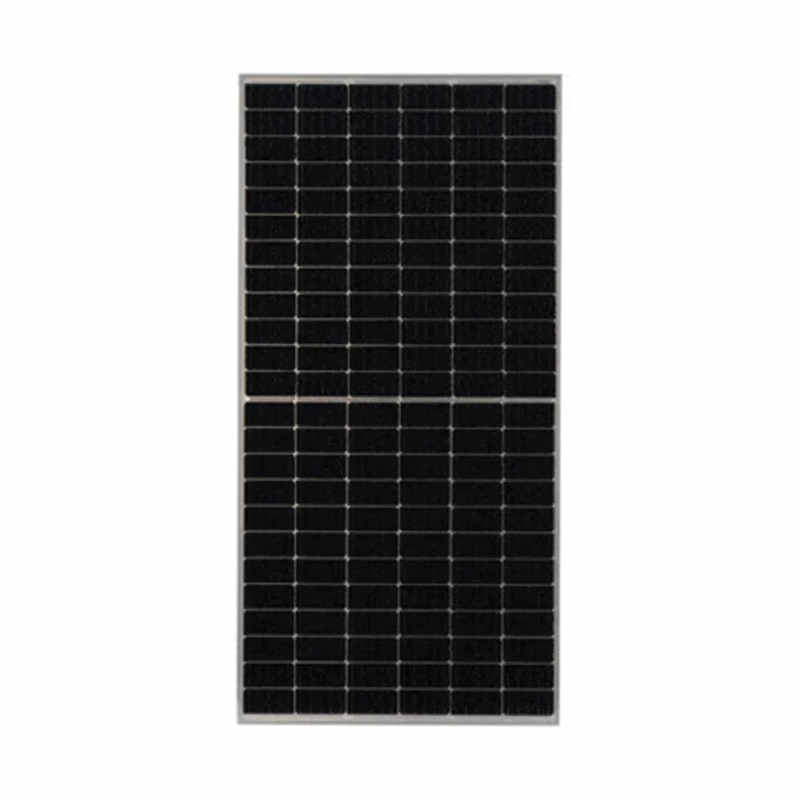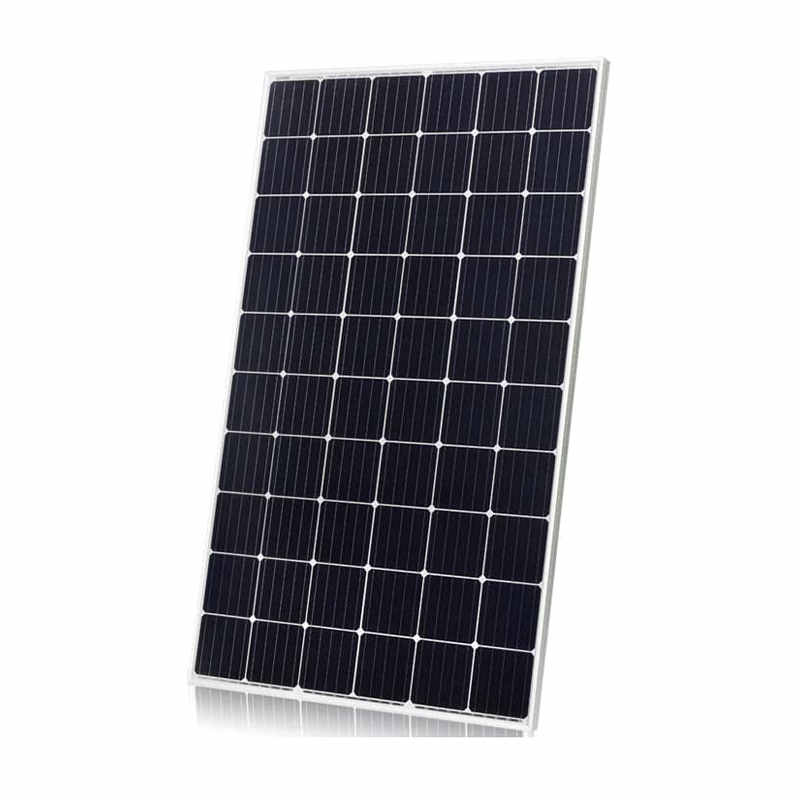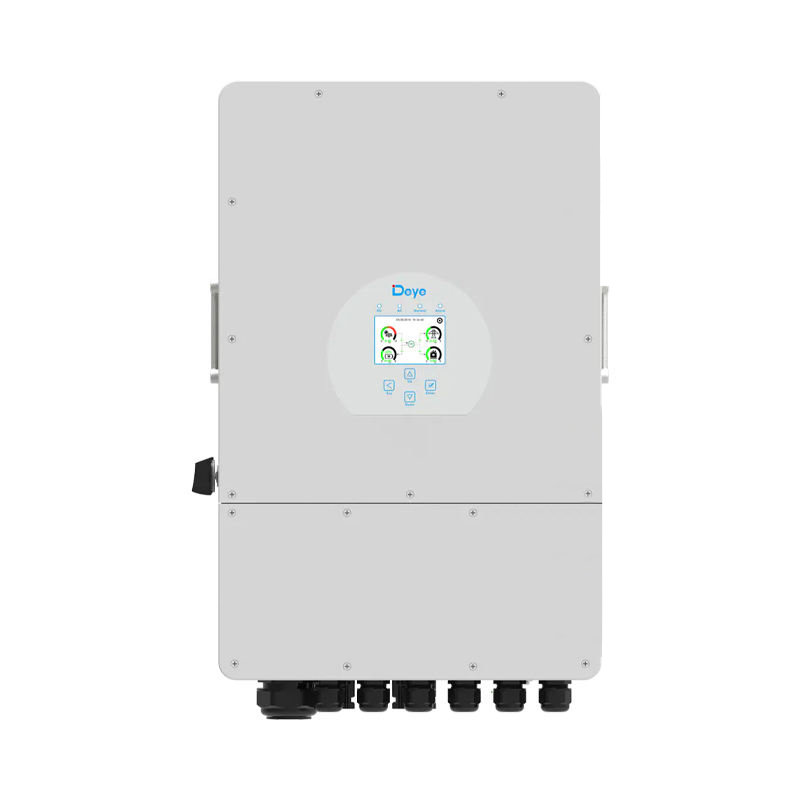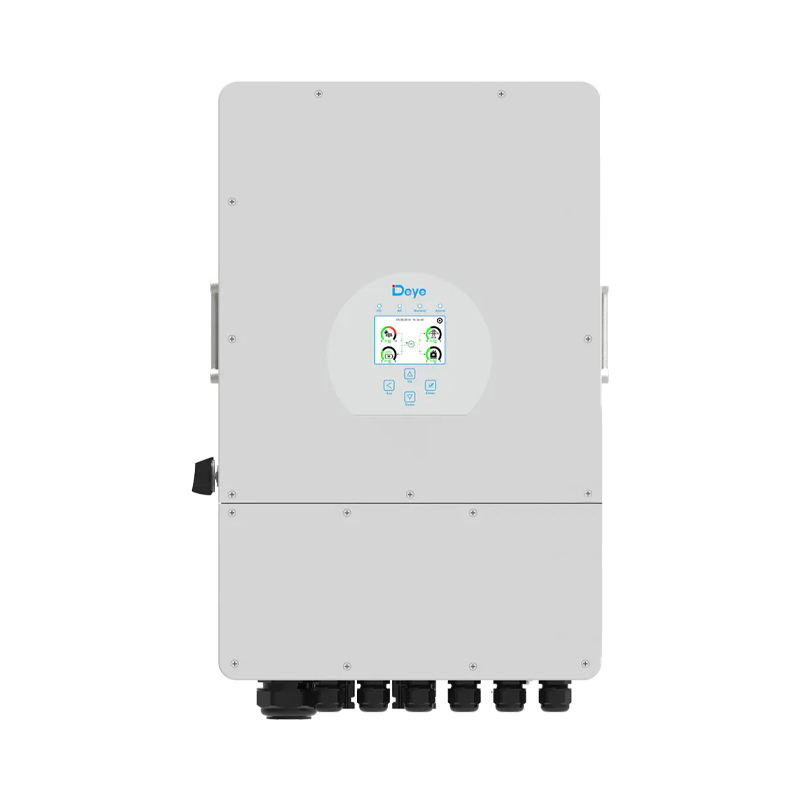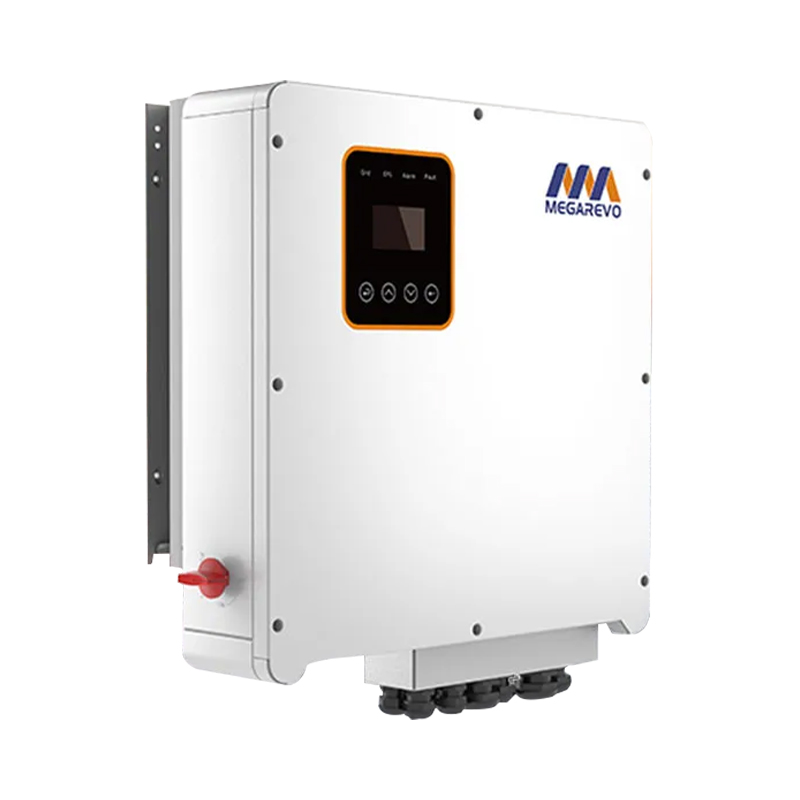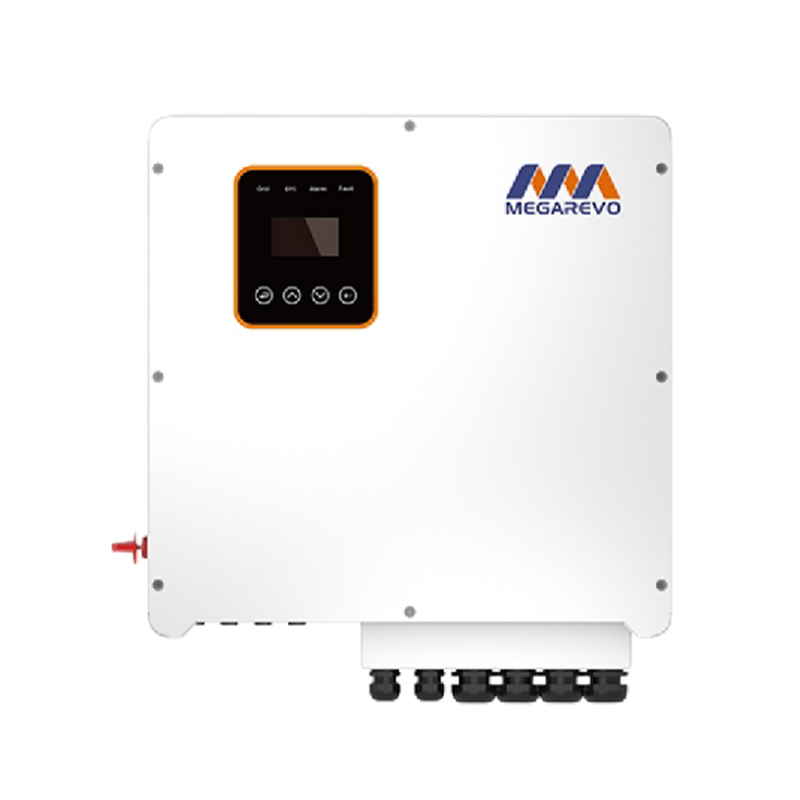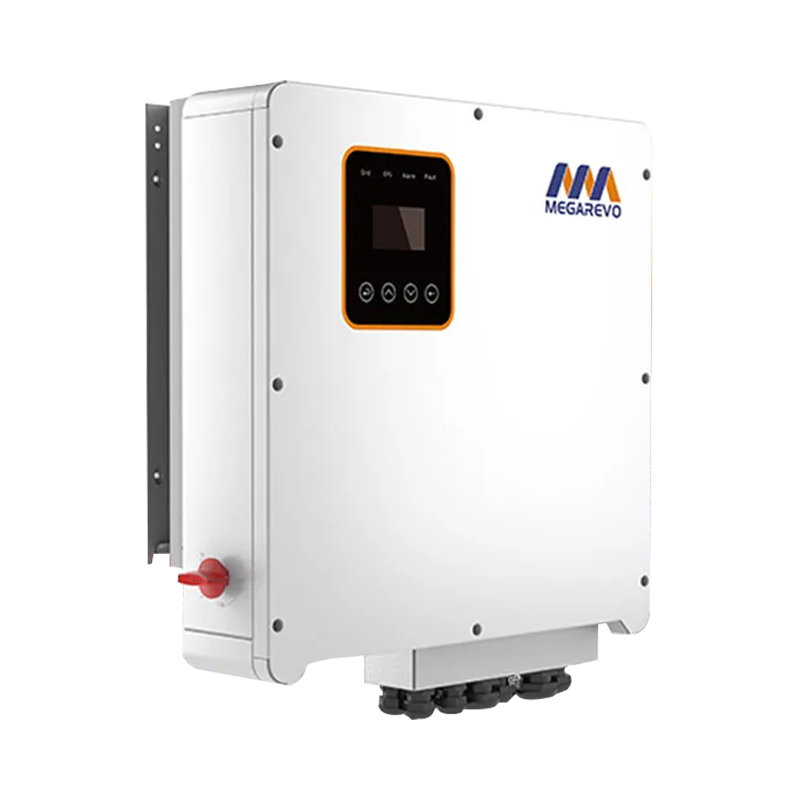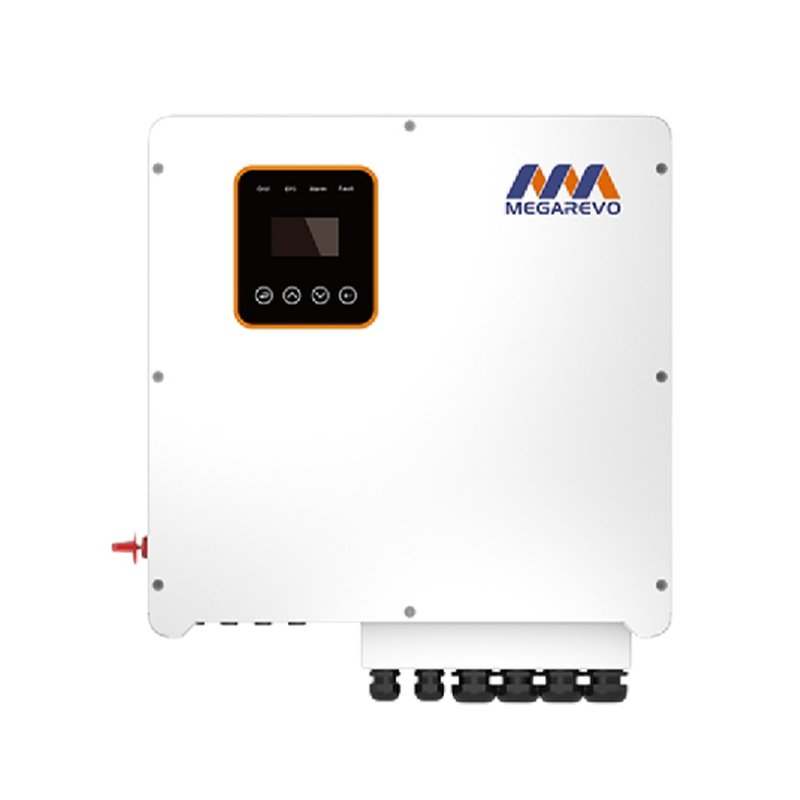-
 حمل و نقل سریع
حمل و نقل سریع
-
 قیمت رقابتی
قیمت رقابتی
-
 خدمات پس از اتمام عالی
خدمات پس از اتمام عالی

 0
0


- صفحه اصلی
- محصولات
- پنل PV
- اینورتر خورشیدی
- باتری ذخیره سازی خورشیدی
- کیت های فتوولتائیک مسکونی
- کیت فتوولتائیک بالکن/باغ
- براکت های پنل خورشیدی
- نیروگاه در فضای باز
- شمع شارژ EV
- لوازم جانبی فتوولتائیک
- راه حل C&I ESS
- درباره ما
- خبرها و رویدادها
- با ما تماس بگیرید
منوی وب
- صفحه اصلی
- محصولات
- پنل PV
- اینورتر خورشیدی
- باتری ذخیره سازی خورشیدی
- کیت های فتوولتائیک مسکونی
- کیت فتوولتائیک بالکن/باغ
- براکت های پنل خورشیدی
- نیروگاه در فضای باز
- شمع شارژ EV
- لوازم جانبی فتوولتائیک
- راه حل C&I ESS
- درباره ما
- خبرها و رویدادها
- با ما تماس بگیرید
جستجوی محصول
زبان
خروج از منو
دسته بندی محصولات
دسته بندی اخبار
پستهای اخیر
-
نحوه سیم کشی پانل های خورشیدی در سری: مراحل ایمن، نمودارها و محاسبات
Dec 19,2025 -
نحوه راه اندازی پنل های خورشیدی برای RV: یک راهنمای عملی
Dec 09,2025 -
چگونه از پانل های خورشیدی درآمد کسب می کنید: استراتژی های عملی
Dec 05,2025 -
چگونه یک مزرعه خورشیدی بسازیم: الزامات، هزینه ها و خطرات
Nov 20,2025 -
راهنمای لوازم جانبی فتوولتائیک - انتخاب، نصب، نگهداری
Nov 09,2025
شمع شارژ: راهنمای نهایی شارژ وسایل نقلیه الکتریکی
1. Introduction to Charging Piles
What is a Charging Pile?
A charging pile is a device used to recharge electric vehicles (EVs) by supplying electrical power to their batteries. Essentially, it is an infrastructure system designed to connect an EV to a power source, facilitating the charging process. Charging piles can vary in complexity, from simple household outlets to advanced high-speed charging stations that rapidly replenish battery power.
In its most basic form, a charging pile is similar to a gas station pump, but instead of fueling an internal combustion engine, it transfers electricity to an electric vehicle. The process involves converting electrical power from the grid into the appropriate voltage and current for the vehicle’s battery.
Why are Charging Piles Important for EV Adoption?
As the world shifts toward electric mobility, the availability and accessibility of charging infrastructure become critical factors in encouraging the adoption of electric vehicles. Charging piles play an essential role in this transition by providing the necessary infrastructure for charging EVs at home, at work, or in public spaces.
Without a reliable and widespread network of charging piles, EV owners would face range anxiety—the fear of running out of battery before reaching a charging station—making the idea of owning an EV less appealing. The establishment of convenient and efficient charging systems not only removes these concerns but also supports the environmental goals of reducing reliance on fossil fuels and cutting down carbon emissions.
Brief History and Evolution of Charging Technology
The history of charging technology mirrors the growth of electric vehicles themselves. The first public EV charging stations emerged in the early 2000s as electric cars like the Toyota Prius began to gain attention. These early stations were basic, often providing low-voltage charging with limited charging speeds, primarily designed for home use or in small public networks.
As the popularity of electric vehicles increased, so did the demand for faster and more efficient charging. In response, manufacturers began developing different types of chargers, such as Level 2 chargers that provided faster charging speeds compared to the standard 110V household outlets. Fast forward to today, and we see the rise of DC Fast Chargers, capable of charging an EV’s battery to 80% in as little as 30 minutes.
Technological innovations continue to evolve, focusing on improving charging speeds, reducing costs, and expanding accessibility. The growing trend of Tesla Superchargers and other rapid charging networks showcases the drive toward creating seamless, fast, and widespread charging networks. At the same time, innovations like wireless charging and smart charging systems are already making their way into the market, pointing to an exciting future for EV infrastructure.
2. Types of Charging Piles
Electric vehicle charging piles can vary greatly in terms of power output, speed, installation complexity, and cost. Understanding the different types of charging piles helps EV owners make informed decisions on which system best suits their needs. Below, we’ll explore the three primary types of charging piles used today: Level 1, Level 2, and DC Fast Charging.
Level 1 Charging: Standard Household Outlet
Level 1 charging is the most basic form of charging, often using a regular household outlet (120V). It’s the simplest option for EV owners, requiring no special installation. This type of charging is perfect for those who have the time to charge their EV overnight at home.
Pros and Cons
Pros:
No need for any additional installation—just plug into any standard electrical outlet.
Inexpensive and widely available, as it uses existing home infrastructure.
Cons:
Slow charging speed; typically, an EV will gain about 3-5 miles of range per hour of charging.
Not suitable for long trips or frequent charging needs due to the slow rate.
Charging Speed and Use Cases
Level 1 charging is best for people who don’t need to recharge their EV quickly, such as urban dwellers with access to off-street parking. It is ideal for overnight charging, allowing users to wake up with a full battery. However, for those who use their car for long commutes or road trips, Level 1 charging will be too slow to be practical on a daily basis.
Level 2 Charging: 240V Charging
Level 2 chargers, which operate at 240 volts, offer faster charging times than Level 1. These chargers are commonly installed in homes, public charging stations, and workplaces. They can fully charge an EV in a few hours, depending on the battery size and vehicle efficiency.
Pros and Cons
Pros:
Faster charging times compared to Level 1. Most EVs will be charged fully in 4-8 hours, depending on the vehicle and the charger’s output.
More energy-efficient and reliable for daily use.
Widely available in public spaces and workplaces, making it convenient for users to top up during the day.
Cons:
Requires installation of a dedicated 240V circuit, which may involve extra costs for installation and potential home upgrades.
Slightly higher installation cost compared to Level 1.
Charging Speed and Use Cases
With Level 2 charging, you can expect to gain 10-60 miles of range per hour of charging, depending on the EV and charger. This makes it an excellent option for individuals who use their vehicles for daily commuting and need a reliable way to keep the battery topped off. Level 2 chargers are also ideal for public locations such as shopping centers, workplaces, and transit hubs where people may need to charge their EVs during longer stays.
Installation Requirements
To install a Level 2 charging pile at home, you’ll need a 240V outlet, which may require electrical upgrades if your home’s system isn’t equipped for it. Professional installation is typically recommended to ensure safety and optimal performance.
DC Fast Charging: Rapid Charging Solutions
DC Fast Charging (also known as Level 3 charging) is the fastest charging option available. These chargers supply direct current (DC) directly to the battery, bypassing the vehicle’s onboard charger and providing high-speed power delivery. DC fast chargers are designed for quick top-ups during long trips and are often found at highway rest stops and dedicated charging stations.
Pros and Cons
Pros:
Extremely fast charging. In some cases, DC Fast Chargers can charge an EV to 80% in 20-30 minutes.
Perfect for long-distance travel, as they allow drivers to quickly recharge and get back on the road.
Cons:
High installation cost and infrastructure requirements.
Less common in residential settings due to the high electrical demand.
Some older EV models may not be compatible with DC Fast Chargers.
Charging Speed and Use Cases
DC Fast Charging can provide between 60 to 100 miles of range in just 30 minutes, depending on the vehicle’s battery and the charger’s output. This makes it the go-to solution for EV owners planning long trips or for emergency situations when quick recharging is needed. However, it’s not meant for regular daily use due to its higher cost and the strain it can put on the battery over time if used too frequently.
CHAdeMO vs. CCS
DC Fast Chargers come in two primary connectors: CHAdeMO and CCS (Combined Charging System). These two standards are not always compatible with all EVs, which is why it's essential to know your vehicle’s charging port before using a DC Fast Charger.
CHAdeMO is an older standard primarily used by Japanese automakers such as Nissan and Mitsubishi.
CCS is more commonly used by American and European automakers and supports faster charging speeds.
Tesla Superchargers: The Tesla Charging Network
Tesla has created its own proprietary charging network, called Superchargers, which are designed to quickly charge Tesla vehicles. These chargers provide high-speed charging capabilities, allowing Tesla owners to add significant range in a relatively short period of time.
Pros and Cons
Pros:
Tesla Superchargers are known for their reliability and speed, often offering up to 170 miles of range in just 30 minutes.
Tesla’s proprietary network is built to seamlessly integrate with the brand’s vehicles, offering an optimized charging experience.
Cons:
Exclusively available to Tesla owners, though the company has begun to open up its network to non-Tesla EVs in some regions.
Not as widespread as other charging networks, although it’s expanding rapidly.
Charging Speed and Use Cases
Superchargers are ideal for long-distance travel, enabling Tesla owners to stop for a quick recharge along major highways and continue their journey with minimal downtime. Tesla's network continues to grow, and the company is also working on introducing even faster charging options.
3. Key Components of a Charging Pile
A charging pile is not just a simple power outlet—it consists of various components that work together to ensure efficient, safe, and reliable charging. Understanding these key components will help users make informed decisions when selecting or installing a charging pile.
Charging Connector Types (SAE J1772, CCS, CHAdeMO, Tesla)
The charging connector is the interface through which electrical power is transferred from the charging pile to the EV. Different electric vehicle manufacturers use different types of connectors, so it's crucial to know which type is compatible with your vehicle.
SAE J1772: This is the most common connector used for Level 1 and Level 2 AC charging in North America. It’s a standard connector for most non-Tesla EVs, including models from Chevrolet, Ford, Nissan, and others.
CCS (Combined Charging System): CCS is a standard for DC Fast Charging used by several automakers, including Volkswagen, BMW, and General Motors. It combines the J1772 connector for AC charging with additional pins for DC fast charging, allowing for faster charging speeds.
CHAdeMO: Originally developed by Japanese manufacturers, this connector is used by several EV models, including the Nissan Leaf and Mitsubishi Outlander PHEV. CHAdeMO is mainly used for DC Fast Charging and has slower charging speeds compared to CCS.
Tesla Connector: Tesla uses its proprietary connector for both Level 2 charging and DC Fast Charging (Superchargers). While Tesla vehicles can use adapters to charge on other networks, Tesla Superchargers are designed specifically for Tesla EVs.
When installing a charging pile, it's important to consider which connectors will be compatible with your EV or whether the charging station offers multiple connector types to accommodate different vehicles.
Charging Cables and Their Specifications
Charging cables are another critical component of a charging pile. The cables must be rated for the appropriate power output, as using the wrong type can result in inefficient charging or even safety hazards.
AC Charging Cables: For Level 1 and Level 2 chargers, AC charging cables typically range in length from 15 to 25 feet (4.5 to 7.5 meters). They are built to handle voltages up to 240V (for Level 2 chargers), and they need to be durable enough for repeated use and weather exposure.
DC Fast Charging Cables: These cables are thicker and heavier than AC cables due to the higher power they carry. They can deliver up to 500A of current for very fast charging speeds. As with AC cables, their length is typically around 15-25 feet, but they need to be able to handle much higher currents to safely charge the EV quickly.
It’s essential to choose a charging pile that has a cable with the correct specifications for your vehicle’s charging needs. Additionally, some charging stations offer retractable cables to reduce clutter and improve ease of use.
Charging Station Enclosure and Safety Features
The enclosure of the charging pile protects the internal components and ensures the system is safe to use. Enclosures come in various designs, from simple boxes to more sophisticated, weather-resistant units.
Weatherproofing: Charging piles are often installed outdoors, so they must be equipped with weatherproof enclosures to prevent damage from rain, snow, or extreme temperatures.
Overcurrent Protection: This feature ensures that the charging pile automatically shuts off if there’s an overcurrent (excessive electrical flow), preventing overheating and potential damage to the EV or charging pile.
Ground Fault Protection: This prevents electrical shocks or fires caused by ground faults. It ensures that any stray electrical currents are safely grounded to prevent harm to users or damage to the vehicle.
Overvoltage Protection: Charging piles are designed to handle fluctuations in voltage. If there’s a power surge, the overvoltage protection ensures that the charging station doesn’t send harmful levels of electricity to the EV’s battery.
These safety features are important for both protecting your investment in a charging pile and ensuring the safety of users.
Metering and Billing Systems
Charging piles, particularly those in public and commercial locations, often have metering systems to track the amount of electricity consumed during charging sessions. This metering helps ensure users are billed correctly for the energy they use.
Smart Meters: Many charging stations are equipped with smart meters that track the amount of electricity consumed by each vehicle. These meters can communicate with billing systems in real-time to calculate charges for users.
Payment Systems: Some charging piles offer integrated payment systems that accept credit cards, mobile wallets (such as Apple Pay), or even subscription-based services. The integration of payment systems is especially important for public charging stations, where users need to pay for the electricity consumed.
Dynamic Pricing: Some charging stations implement dynamic pricing, where the cost of charging can vary based on demand, time of day, or location. For example, charging prices might be higher during peak hours and lower during off-peak times, incentivizing users to charge when it's less costly.
4. How to Choose the Right Charging Pile
Selecting the right charging pile is essential to ensure it meets your needs, whether for home, workplace, or public charging. Several factors should be considered when making this decision, ranging from the type of vehicle you own to your budget and installation requirements.
Factors to Consider
Choosing a charging pile goes beyond simply selecting a device; it's about understanding how the charging system fits into your lifestyle, driving habits, and the environment where you’ll use it.
EV Model and Battery Capacity
The type of EV you own plays a significant role in determining which charging pile is most suitable. Electric vehicles vary in battery size, charging requirements, and charging port compatibility, so it's essential to know what your vehicle needs before purchasing a charging pile.
Battery Capacity: Larger batteries (e.g., in long-range EVs) will take longer to charge, so a faster charger (Level 2 or DC Fast Charger) might be more practical for these models. On the other hand, smaller EV batteries can charge more efficiently using Level 1 or Level 2 chargers.
Charging Port Compatibility: As mentioned earlier, different charging piles come with various connectors (SAE J1772, CCS, CHAdeMO, Tesla). Ensure that your EV is compatible with the charging pile you're considering or that the station offers adapters.
Charging Speed Requirements
Not all charging piles offer the same charging speed, and determining how quickly you need to charge your EV can significantly influence your decision.
Level 1 Chargers: These chargers are best for users who don't mind waiting long hours (typically overnight) to charge their vehicles. They're ideal for those with light daily driving and the luxury of time for recharging.
Level 2 Chargers: For those who need faster charging, Level 2 chargers are the way to go. They charge an EV in 4-8 hours, which is a great option for daily commutes or if you use your car frequently throughout the day.
DC Fast Charging: If you're a long-distance traveler or need a quick top-up during your day, DC Fast Chargers are the fastest option. However, they are expensive and not suitable for regular use unless you need rapid recharging during road trips.
Location (Home, Public, Workplace)
The location where you plan to install your charging pile is a crucial factor in choosing the right model. Charging piles can be installed at home, at work, or in public spaces, and each setting comes with its own set of considerations.
Home Charging: If you’re installing a charger at home, you have more flexibility in terms of installation. Home charging is usually done with Level 1 or Level 2 chargers, depending on how fast you want to charge your EV overnight. Make sure you have the necessary electrical setup (240V outlet for Level 2).
Public Charging: Public charging stations are often designed for convenience and may offer a mix of Level 2 and DC Fast Charging. These stations are located in key areas such as shopping centers, parking lots, and highways. It's important to verify whether the charging station supports the connector type your vehicle requires.
Workplace Charging: If you're installing a charger at work, you'll want a system that can accommodate multiple users or a system that operates with a payment system to bill employees. Workplace chargers are typically Level 2 due to their balance of speed and cost-efficiency.
Budget
Cost is always an important consideration when choosing a charging pile. Charging piles range from affordable Level 1 home chargers to more expensive DC Fast Chargers. It’s important to balance your budget with your needs.
Level 1 Chargers: These are the most budget-friendly option, as they don’t require installation of new circuits. They typically cost between $300 and $600, but keep in mind the slow charging speed.
Level 2 Chargers: These chargers are pricier due to their faster charging capabilities and the need for professional installation. Prices typically range from $500 to $1,500 for the unit, with installation costs ranging from $200 to $1,000 or more depending on your home’s electrical system.
DC Fast Chargers: These are the most expensive option, often costing several thousand dollars for both the unit and installation. They’re typically used for commercial or public charging stations.
In addition to the upfront costs, consider the ongoing costs associated with electricity and potential maintenance. Some regions also offer incentives or rebates for EV charging pile installations, so it’s worth checking for available discounts that could offset the initial investment.
Comparing Features and Specifications
When evaluating different charging piles, it’s helpful to compare the features and specifications of each option. Here are some key features to look for:
Charging Speed: As discussed, the speed of the charger is one of the most important factors. Check the charging rate (measured in kilowatts, kW) and how it matches your EV’s charging capacity.
Safety Features: Ensure the charger has built-in protection systems like overcurrent protection, ground fault protection, and overvoltage protection to ensure safe charging.
Smart Features: Many modern charging piles come with smart features like Wi-Fi connectivity, remote monitoring, scheduling, and load balancing. These features can be particularly useful for optimizing energy usage and managing costs.
User Interface: Some charging piles come with a user-friendly display or app that allows you to monitor charging progress, set charging schedules, and receive notifications.
Warranty and Support: Be sure to check the warranty period and customer support options available for the charging pile. A reliable warranty can offer peace of mind in case of issues down the line.
5. Installation of Charging Piles
Installing a charging pile involves more than simply plugging it into an outlet—it requires careful planning, understanding of electrical requirements, and compliance with local regulations. Whether you're installing a charger at home, in a public location, or at the workplace, each installation has its own set of considerations. Let's take a closer look at the various installation scenarios.
Home Charging Installation
Installing a charging pile at home is one of the most common options for EV owners. It provides the convenience of charging your vehicle overnight and waking up to a full battery. However, there are important steps and considerations for ensuring the installation goes smoothly.
Electrical Requirements and Upgrades
For Level 1 chargers, the good news is that you don’t need any major electrical upgrades, as they use a standard 120V outlet. However, for Level 2 chargers (which are recommended for faster charging), you will need a 240V outlet, which may require a professional to install. Depending on your home’s existing electrical system, you might need to upgrade the electrical panel or install a dedicated circuit to ensure your system can safely support the additional load.
For example, a home electrical system might have a limited capacity for additional high-demand appliances. It’s important to consult with a licensed electrician to ensure that the system can handle the load of the charger without tripping breakers or creating safety risks.
Permitting Process
In many regions, permits are required for the installation of Level 2 chargers. This process involves submitting plans to your local municipality, ensuring that the installation complies with local building codes and safety standards. Permitting requirements vary by location, but a professional installer will generally take care of these details.
Professional vs. DIY Installation
While it might be tempting to install the charger yourself, professional installation is highly recommended for safety and reliability. Certified electricians can ensure that the installation complies with local electrical codes and that the charger is set up safely. DIY installations, while potentially cheaper, come with risks such as improper wiring or failure to follow necessary safety protocols.
Public Charging Installation
Installing a charging pile in a public location, such as a shopping mall, parking garage, or public park, comes with its own set of challenges. Public charging stations are often used by multiple EV owners, so they need to be convenient, reliable, and efficient.
Site Selection and Planning
One of the first steps in installing a public charging station is selecting the right site. The location should be easily accessible, near high-traffic areas, and with enough space for users to park and access the charging station. You’ll also need to assess the surrounding infrastructure—such as available electricity grid capacity—to ensure the site can support multiple chargers.
The space should be well-lit, safe, and preferably close to amenities like shopping centers, restaurants, or office buildings to encourage people to charge while they run errands.
Grid Connection and Power Supply
Public chargers, particularly DC Fast Chargers, require a reliable power supply, often with more demand than typical residential chargers. Installing a high-speed charger may necessitate upgrading the local electrical infrastructure to handle the load, which could include new transformers or additional connections to the grid.
This process may involve working with utility companies, local authorities, and experienced installers to ensure the system is properly integrated into the grid.
Compliance and Regulations
Public charging stations are subject to stricter regulations than home installations. These regulations ensure that the station is safe, accessible, and user-friendly for everyone, including people with disabilities. For instance, charging stations must adhere to the Americans with Disabilities Act (ADA) standards in the U.S. to ensure that they are accessible to all users.
Furthermore, some areas may have specific regulations regarding pricing structures, metering systems, and public access policies that must be followed to comply with local laws.
Workplace Charging Installation
Offering charging at the workplace is becoming an increasingly popular way to support employees who drive EVs. This installation provides the convenience of charging while at work, but it also comes with its own considerations.
Costs and Considerations
For workplaces, the installation of charging piles can be a larger investment, especially if you’re planning to install multiple chargers. You’ll need to consider the number of employees with EVs and whether the demand will justify the expense. A mix of Level 2 chargers is often recommended to balance cost and charging speed, allowing employees to charge their vehicles during the workday without needing a full charge.
Site Selection and Planning
Choosing the right location within the workplace is crucial. Ideally, chargers should be installed in employee parking lots or nearby areas where employees can easily access them. Additionally, you’ll need to ensure that there’s enough space for multiple vehicles to charge simultaneously.
Compliance and Regulations
Workplace charging is often subject to specific safety standards, especially regarding electrical load and accessibility. Be sure to consult with legal and regulatory experts to ensure that your charging stations comply with local regulations, including building codes, safety standards, and any applicable workplace-related laws.
Installing a charging pile involves more than just plugging it in—it’s about ensuring safety, meeting technical requirements, and complying with regulations. Whether you’re installing at home, at work, or in a public setting, it’s important to consult with professionals, plan the installation carefully, and consider the long-term implications of your choice.
6. Costs Associated with Charging Piles
While electric vehicle charging piles can be a significant investment, understanding the total cost breakdown will help you make an informed decision. Costs can vary depending on factors such as the type of charger, installation requirements, electricity usage, and maintenance. In this section, we’ll go over the primary costs associated with charging piles to help you plan your budget effectively.
Charging Pile Purchase Costs
The initial cost of purchasing a charging pile depends on the type and capabilities of the charger you choose. Here’s a breakdown of the average costs for different types of chargers:
Level 1 Chargers: These are typically the most affordable chargers, as they only require a standard 120V outlet. The cost of a Level 1 charging pile generally ranges from $300 to $600. Since these chargers don’t require any special installation, they are the least expensive option overall.
Level 2 Chargers: The price of a Level 2 charger is higher due to the faster charging capabilities and the need for a dedicated 240V circuit. Expect to pay anywhere from $500 to $1,500 for the charger itself, depending on the brand and features. Some chargers come with added smart functionality, such as Wi-Fi connectivity and scheduling, which can raise the price.
DC Fast Chargers: These are the most expensive types of chargers, typically used in commercial or public settings. They can cost anywhere from $5,000 to $40,000 or more, depending on the power level (measured in kilowatts) and the complexity of the installation. As these chargers provide high-speed charging, they are usually found in locations requiring rapid turnaround, like highway rest stops or fast-food chains.
Installation Costs
Installing a charging pile involves more than just setting up the charger itself—it often requires electrical work and potentially upgrades to your home or workplace’s electrical system. Here’s a breakdown of installation costs:
Home Installation:
For Level 1 chargers, installation is often not necessary, as these chargers can simply be plugged into a standard outlet. However, if your home is lacking the appropriate outlet, the cost of a simple electrical upgrade can range from $100 to $200.
For Level 2 chargers, installation will require a dedicated 240V circuit. The installation cost for a Level 2 charger typically ranges from $300 to $1,000 depending on the complexity of the installation and any required electrical upgrades (e.g., upgrading the electrical panel or adding a new circuit).
Additionally, some homes may require permits or approval from local building authorities, which could add $100 to $300 to the cost.
Public and Workplace Installation:
Installation for public charging stations or workplace chargers is more involved and costly due to the need for higher-capacity electrical connections, more complex site planning, and additional safety features.
The installation of Level 2 chargers at commercial or public locations can range from $2,000 to $10,000 per charger, depending on the site’s electrical infrastructure and required upgrades. For DC Fast Charging stations, the installation costs can be significantly higher, ranging from $10,000 to $50,000 or more per station.
Site selection, electrical work, power supply upgrades, and permits can all add to the overall installation costs for public or workplace charging piles.
Electricity Costs
The ongoing electricity cost to charge your vehicle will depend on several factors, such as the local electricity rate, how often you charge, and how much energy your EV requires.
Cost Per kWh: Electricity prices vary by location, but on average, in the U.S., the cost of electricity is around $0.10 to $0.30 per kWh. The rate can be higher in certain regions, especially if charging during peak hours.
Average Charging Costs:
For Level 1 charging, you might expect to pay about $0.12 to $0.20 per kWh (the cost can vary depending on local rates). A typical EV battery with a 60 kWh capacity will cost around $7 to $12 to fully charge using a Level 1 charger.
For Level 2 charging, the cost of charging is typically similar on a per kWh basis. However, the faster charging rate means you may need fewer hours to charge, thus reducing the total time you're paying for electricity.
DC Fast Charging typically incurs a higher cost due to the rapid energy transfer, with prices often ranging from $0.20 to $0.80 per kWh depending on the charging network and location. Some DC fast chargers may also charge by time, such as $0.10 to $0.50 per minute of charging.
If you’re charging at home, the electricity cost per month can range from $30 to $80 for typical usage, but this will depend on your driving habits and the size of your battery.
Maintenance Costs
Most charging piles are low-maintenance devices, especially if they are installed properly and used regularly. However, there are some maintenance costs to consider:
Routine Maintenance: Depending on the model and location of the charger, you may need to perform routine maintenance, such as cleaning connectors, checking for wear and tear, and ensuring that the charger is free from obstructions. These activities are generally low-cost but can contribute to long-term reliability.
Repair Costs: While chargers are generally durable, they may require repairs or part replacements after years of use. The cost of repairing a charging pile can range from $100 to $500 depending on the issue.
Software Updates: Some chargers, especially smart chargers with Wi-Fi or app integration, may require periodic software updates. These updates are usually free, but some providers may charge for premium features or advanced functionalities that require additional subscription fees.
Potential Incentives and Rebates
To offset the costs of purchasing and installing charging piles, many governments and utilities offer incentives, rebates, or tax credits for electric vehicle owners. These incentives can vary greatly depending on your location, but here are some common options:
Federal Tax Credit: In the U.S., the federal government offers a tax credit for up to $1,000 for home charging equipment. Certain regions also have additional state-level rebates or credits for home EV charger installations.
Utility Incentives: Many utility companies offer discounts or rebates for installing home chargers. Some utilities may also have special EV charging rates that are lower during off-peak hours.
Commercial Incentives: For businesses installing EV chargers, there are often grants or tax breaks available. Some commercial charging stations are also eligible for reimbursement through various programs aimed at expanding public EV infrastructure.
7. Finding Charging Stations
As more people adopt electric vehicles, finding reliable and convenient charging stations has become an essential part of the EV ownership experience. Whether you’re at home, at work, or on the road, knowing where to find a charging station is key to maximizing the convenience of driving an EV. In this section, we will explore how to locate charging stations, the apps and websites that help you, and some tips for making sure you have a smooth charging experience wherever you go.
Charging Network Apps and Websites
One of the easiest ways to find EV charging stations is by using apps and websites that track charging locations in real-time. These tools not only help you find nearby charging stations but also provide useful information about availability, connector types, pricing, and even user reviews. Here are a few popular apps and websites that are essential for EV owners:
PlugShare
PlugShare is one of the most popular and comprehensive apps for finding charging stations. It offers a large, crowd-sourced database of public chargers, covering not only common networks but also individual user-owned chargers.
Features:
Real-time updates on charger availability
Reviews and ratings for stations
Filterable search by charger type, network, and speed
The ability to add your own charging station if you have one
Platforms: Available as a website and app for both iOS and Android.
ChargePoint
ChargePoint is one of the largest and most widely used EV charging networks in the world, and their app allows you to easily find their stations as well as others.
Features:
Real-time availability for stations
Detailed station information (charger type, price, hours of operation)
Option to start and stop charging sessions directly from the app
Route planning with integrated navigation to nearby stations
Platforms: Available for iOS and Android.
Electrify America
Electrify America is a fast-growing network of DC fast chargers, primarily focused on highway corridors for long-distance EV travel. The Electrify America app allows you to quickly locate their high-speed chargers.
Features:
Focus on DC Fast Chargers for rapid charging
Real-time availability updates
Payment system integration for easy billing
Charging session start/stop via app
Platforms: Available for iOS and Android.
A Better Route Planner (ABRP)
While primarily used for planning long-distance EV trips, ABRP is an invaluable tool for finding charging stations along your route. It provides accurate estimates of your vehicle’s range and identifies the most efficient charging stops.
Features:
Customizable route planning with real-time energy consumption estimates
Charger compatibility and real-time station status
Estimated charging time and duration
Integration with popular EV models for accurate predictions
Platforms: Available as an app for iOS, Android, and also a web version.
Navigation Systems with Charging Station Integration
If you drive a newer EV or a car equipped with a built-in navigation system, many vehicles now have integrated charging station maps. These systems allow you to plan your routes with charging stops directly on the dashboard, eliminating the need to rely solely on third-party apps.
Tesla Navigation System: Tesla vehicles come with built-in navigation that can automatically route you to the nearest Supercharger or compatible third-party chargers, and it also provides real-time updates on charger availability.
Other EV Manufacturers: Many other EV brands, such as BMW, Nissan, and Ford, have integrated charging station search features into their navigation systems. These systems typically highlight the nearest charging stations, estimated charging times, and availability information.
Tips for Locating Reliable Charging Stations
While charging networks are expanding rapidly, not all charging stations are created equal. Here are a few tips to ensure you have a smooth charging experience:
1. Plan Ahead
When heading on a road trip or long drive, it’s always a good idea to plan your route in advance using a navigation app or charging network app. This ensures that you know where the nearest charging stations are and avoid the risk of getting stranded with a depleted battery.
Tip: When using apps like PlugShare or ChargePoint, check for real-time availability updates before arriving at a station. Many stations are shared by multiple users, and they may be occupied or out of service.
2. Consider Charging Speed
Not all chargers offer the same charging speed, so be sure to look for stations that match your needs. If you're in a rush, DC Fast Chargers are your best bet, but if you have time, a Level 2 charger is often a more convenient (and less crowded) option.
3. Look for Charging Stations with Amenities
If you’re planning to charge for an extended period, consider looking for stations near cafes, shopping malls, or restaurants. This will give you something to do while your car charges, making the experience much more enjoyable.
Tip: Some charging stations at rest stops along highways also offer food and bathroom facilities, so take advantage of these opportunities to stretch your legs while your vehicle charges.
4. Monitor Your Charging Time
At some charging stations, especially DC Fast Chargers, you may be billed by time instead of the amount of energy used. Be mindful of how long you spend at the station, especially during peak hours when fees might increase.
5. Check for Access Restrictions
Some charging stations may have limited access during certain hours (e.g., at private office buildings or restricted public spaces). Be sure to check the station’s hours of operation and any access requirements before heading there.
8. Maintaining Your Charging Pile
A charging pile is a vital part of your EV ecosystem, and keeping it in good condition ensures that it remains reliable and efficient for years. Regular maintenance and addressing potential issues promptly can extend the lifespan of your charging station and prevent costly repairs. In this section, we’ll go over key maintenance tasks and tips for troubleshooting common issues with charging piles.
Regular Inspections and Cleaning
Routine inspections and cleaning are the foundation of proper charging pile maintenance. A clean and well-maintained charger operates more efficiently, reduces the risk of faults, and helps ensure safety during use. Here’s what to keep in mind:
Inspect the Cable and Connector: Regularly check the charging cable and connector for wear and tear. Look for cracks, fraying, or exposed wires, as these can pose safety risks. If you notice any significant damage, it’s best to replace the cable or connector to prevent potential hazards.
Clean the Connectors: Over time, dirt, dust, and moisture can accumulate on the connectors, leading to poor connections or even electrical malfunctions. Clean the connectors using a dry microfiber cloth. If there is stubborn grime, use a small amount of rubbing alcohol on the cloth to clean the connectors. Be sure not to use any abrasive cleaners that could damage the surface.
Check for Corrosion: Inspect the area where the charger plugs into your EV. Corrosion can build up on both the charging pile connector and your EV’s charging port, especially if exposed to the elements. If corrosion is present, you can gently clean it with a brush or use a corrosion removal solution. In severe cases, a replacement part may be necessary.
Troubleshooting Common Issues
Like any electrical system, charging piles may encounter problems from time to time. Here are some common issues you might face and how to troubleshoot them:
1. Charging Station Won’t Start
If your charging pile is not starting when you plug in your EV, here are a few things to check:
Check the Power Supply: Ensure that the charging station is properly plugged into the power outlet, and the circuit breaker hasn’t tripped. If the breaker is off, reset it and try again.
Inspect the Cable: Check if the cable is properly connected to both the charger and the car. Sometimes a loose connection can prevent charging from starting.
Check for Fault Codes: Many modern charging piles have error codes or display lights that indicate what’s wrong. Refer to the user manual or app for specific error codes and troubleshooting steps.
2. Slow Charging or No Power
If your charging speed seems slower than usual or you aren’t receiving any power, there could be several causes:
Connection Issues: Check the cable and connector for any signs of damage or dirt that could affect the connection. Clean the connectors as mentioned earlier to ensure a stable connection.
Power Source Issues: If you’re charging at home, confirm that your electrical panel can support the load. A trip in the main panel could disrupt charging, particularly for Level 2 chargers that require more power.
Charging Speed Limits: Sometimes the charger itself might be working, but the vehicle’s charging rate is limited by its own battery management system. Check your vehicle’s settings to ensure that it’s set to accept faster charging speeds.
3. Charger is Unresponsive or Displaying Error Codes
Many charging piles are equipped with advanced software that helps diagnose problems. If your charger is unresponsive or showing an error code, follow these steps:
Restart the Charging Pile: Turn off the charging pile, wait for 30 seconds, and then turn it back on. This can often resolve minor glitches or software issues.
Consult the Manual or Support App: Refer to the user manual for troubleshooting specific error codes. Many chargers also have companion apps that can provide troubleshooting tips or offer a direct link to customer support.
Software Update: Some charging piles, especially smart ones, may require software updates for optimal performance. Check whether the charger has the latest software version installed and update it if necessary.
When to Call a Professional
While many issues with charging piles can be handled with basic troubleshooting, there are times when a professional technician should be called in. Here’s when you should seek help from a certified expert:
Electrical Issues: If you suspect that the problem lies with your home’s electrical system or there is a persistent power issue, it’s best to contact a licensed electrician. Dealing with high-voltage electrical systems can be dangerous if you’re not trained.
Internal Component Failures: If the charging pile continues to malfunction after performing routine troubleshooting steps, there may be an internal issue with the charger itself. A professional technician can diagnose the problem and replace faulty components.
Persistent Error Codes: If your charger is showing a recurring error code that you cannot resolve, it’s time to reach out to the manufacturer or a service professional who can investigate further.
Extending the Lifespan of Your Charging Pile
Taking care of your charging pile is key to ensuring it lasts for many years. Here are some tips to help extend its lifespan:
Avoid Overloading: Avoid using the charger for extended periods beyond its recommended charging time. Most chargers are built to handle standard charging sessions, but consistent overuse could lead to premature wear.
Keep It Covered: If your charging pile is exposed to the elements, consider using a protective cover. Weather conditions such as rain, snow, or extreme heat can affect the performance and lifespan of the charger.
Keep It Dry: Ensure that the charging pile and its connectors remain dry, especially during rainy conditions. If you live in an area with high humidity, moisture can seep into the charging equipment, causing long-term damage.
Service Regularly: Just as you would service your vehicle, schedule regular maintenance for your charging pile to ensure it’s operating at peak performance. Many professionals offer annual maintenance packages that include cleaning, inspection, and software updates.
9. Future Trends in Charging Pile Technology
As electric vehicles (EVs) continue to gain popularity, the charging infrastructure must evolve to meet the increasing demand for faster, smarter, and more efficient charging solutions. The future of charging piles looks incredibly exciting, with advancements in technology aimed at improving the speed, convenience, and sustainability of EV charging. In this section, we’ll explore some of the key trends that are shaping the future of charging pile technology.
Wireless Charging
One of the most talked-about innovations in the EV charging industry is wireless charging, or inductive charging. This technology eliminates the need for physical cables by using electromagnetic fields to transfer energy from a charging pad to a receiver installed in the vehicle. Here's what you need to know about wireless charging:
How It Works: Wireless charging relies on magnetic induction to transfer power. A charging pad installed on the ground creates an electromagnetic field that the receiver coil inside the vehicle picks up, converting it into electrical energy to charge the car's battery.
Convenience: One of the biggest advantages of wireless charging is the sheer convenience. EV owners won’t have to plug in cables—simply parking the vehicle over the charging pad will start the charging process. This is particularly appealing for homeowners, as it reduces the physical effort involved in plugging in and unplugging chargers.
Current Limitations: While the technology is promising, wireless charging is still in its early stages, and efficiency remains a challenge. Wireless charging systems currently tend to have lower power transfer rates compared to traditional plug-in chargers, meaning they may take longer to fully charge the vehicle. However, improvements in this area are being made, and it's likely that wireless charging will become more efficient in the future.
Widespread Adoption: Although wireless charging is already available in some prototype vehicles and limited public stations, widespread adoption will likely take time. More research and development are needed to standardize the technology and bring it to mass market availability.
Smart Charging and Load Balancing
As the demand for EVs continues to grow, the need for smart charging solutions becomes increasingly important. Smart charging allows for greater flexibility, efficiency, and integration with the electrical grid, benefiting both individual users and society as a whole.
Smart Charging: A smart charger is equipped with connectivity features that enable it to communicate with other devices, such as your smartphone, the vehicle, or the electricity grid. This technology can provide features like remote monitoring, scheduling, and optimization of charging times.
Dynamic Pricing: One of the key features of smart chargers is dynamic pricing. With smart charging, EV owners can take advantage of time-of-use pricing offered by utilities, meaning they can charge their vehicles during off-peak hours when electricity rates are lower. For instance, many utilities offer lower rates at night, so EV owners can schedule charging during these periods to save money.
Load Balancing: Smart charging also integrates load balancing, which helps prevent overloading the local grid. During periods of high demand, a smart charger can adjust the charging speed or defer charging to a time when electricity demand is lower. This ensures a more stable grid and reduces the likelihood of blackouts or brownouts.
Vehicle-to-Grid (V2G) Technology: In the future, smart charging could integrate with Vehicle-to-Grid (V2G) technology. This would allow your EV to not only draw power from the grid but also supply power back into it. During peak demand, your EV’s battery could discharge energy back to the grid, helping to stabilize the grid and potentially earning you credits or compensation from your utility provider.V2G technology is poised to revolutionize both the EV and energy industries. In essence, it allows for bidirectional power flow between the EV and the electric grid. Instead of just drawing power from the grid to charge your vehicle, V2G systems enable the vehicle to return excess energy to the grid.
How It Works: V2G-enabled EVs use bi-directional chargers that allow electricity to flow in both directions: from the grid to the vehicle’s battery (for charging) and from the vehicle’s battery back to the grid (for discharging). This system is highly beneficial for the grid during peak demand periods, when there is a need for additional power.
Benefits:
Grid Support: By allowing vehicles to discharge energy back into the grid, V2G technology can help balance supply and demand. This is especially useful during times of high electricity consumption, such as hot summer days when air conditioners are running.
Energy Independence: EV owners can potentially use their vehicles as mobile power storage, which is especially useful during power outages. In areas with high levels of renewable energy, V2G can also help store solar or wind energy during peak production times for use later.
Incentives: Many utilities are exploring ways to compensate consumers for providing power back to the grid. This could lead to incentives or financial rewards for EV owners who participate in V2G programs.
Challenges: The widespread adoption of V2G requires significant changes to the grid infrastructure, including the development of bi-directional chargers and the implementation of new regulatory frameworks. Additionally, not all EV models currently support V2G, though the number of compatible vehicles is growing.
Innovations in Charging Speed and Efficiency
Faster and more efficient charging is a critical area of development in EV infrastructure. As technology advances, charging times are expected to shorten significantly, making it more convenient for EV owners to top off their vehicles without lengthy wait times.
Ultra-Fast Charging: While DC Fast Charging stations already offer rapid charging capabilities, ultra-fast charging technology is now emerging, with new systems capable of delivering charging speeds above 350 kW. This would allow EVs to charge much faster, potentially adding hundreds of miles of range in just 10-20 minutes.
Solid-State Batteries: One of the key developments in faster charging is the use of solid-state batteries. These batteries, which use a solid electrolyte instead of a liquid one, promise to offer much higher energy densities, faster charging times, and better safety. Although solid-state batteries are not yet widespread in the EV market, major automakers and battery manufacturers are making significant progress in their development.
Improved Battery Management Systems (BMS): Advances in BMS technology will allow for more efficient charging by better managing the power flow into the battery, preventing overheating, and optimizing charge cycles. This will reduce charging times while increasing battery lifespan.
High-Power Charging Networks: Several companies are working to build high-power charging networks capable of supporting ultra-fast charging. These new charging stations are expected to support next-generation EVs that require higher charging capabilities, making long-distance travel even more convenient.
10. Conclusion
As electric vehicles continue to gain momentum worldwide, the evolution of charging piles is essential in supporting the transition to greener transportation. In this article, we've explored the key elements of charging pile technology—from understanding the different types of charging stations to the cutting-edge innovations shaping the future of EV charging.
Recap of Key Points
To summarize the most important takeaways:
Types of Charging Piles: EV charging stations range from Level 1 (standard household outlets) to Level 2 (240V charging) and DC fast chargers, each offering different charging speeds and use cases based on the needs of the vehicle and location.
Choosing the Right Charging Pile: Factors like charging speed, installation requirements, location, and budget play a crucial role in selecting the ideal charging pile for your home, workplace, or public use.
Installation & Costs: Whether installing at home or in public spaces, installation costs vary significantly depending on the infrastructure, electrical requirements, and whether you go for professional installation or DIY. Understanding the costs involved, from purchasing the unit to long-term maintenance, is key to managing your investment.
Maintenance: Regular inspections and cleaning are essential for maintaining the functionality of your charging pile. Early detection of issues, such as damaged cables or faulty connectors, can help extend the life of your charging equipment.
Future Trends: Innovations like wireless charging, smart charging, V2G technology, and ultra-fast charging are transforming the landscape of EV charging, offering faster, more efficient, and more sustainable solutions for the future.
The Future of EV Charging
Looking ahead, the future of charging piles is likely to be marked by continued improvements in both technology and accessibility. As the world shifts toward sustainable energy, charging infrastructure will evolve in tandem to make EV adoption even more seamless. Charging piles are expected to become smarter, more integrated into the electrical grid, and capable of offering ultra-fast charging speeds that can make charging an EV as quick and convenient as refueling a traditional car.
Moreover, the integration of renewable energy sources and the growth of vehicle-to-grid systems will help create a more sustainable ecosystem, where EVs play a role not only as consumers of energy but also as contributors to grid stability and energy storage.
Final Thoughts and Recommendations
If you're considering purchasing an electric vehicle or already own one, it's clear that having the right charging pile is a key factor in maximizing the convenience and efficiency of your EV experience. Understanding the different types of chargers, installation requirements, and future technologies will empower you to make informed decisions about your charging infrastructure.
Before you invest in a charging pile, consider your vehicle's battery capacity, charging speed requirements, and location. If you plan to install a charger at home, evaluate your electrical system and whether any upgrades are needed to support faster charging. For public or workplace installations, make sure to stay updated on the availability of high-speed chargers and look into potential incentives and rebates to offset installation costs.
Finally, as the world of EVs and charging technology evolves, it's crucial to stay informed about new developments. The future of EV charging is full of exciting opportunities, and with the right preparation, you can ensure that your charging experience remains efficient, cost-effective, and future-proof.
As the world moves closer to a more sustainable and electrified future, the infrastructure that supports electric vehicles, especially charging piles, will be a fundamental component of the transition. The road ahead is bright, and with each new advancement, EVs become a more practical, reliable, and accessible transportation option for everyone.
محصولات مرتبط
 +31610999937
+31610999937 [email protected]
[email protected] De Werf 11, 2544 EH Hague, The Nederland.
De Werf 11, 2544 EH Hague, The Nederland.
حق چاپ © 2023 Uni Z International B.V. VAT: NL864303440B01 کلیه حقوق این سایت متعلق به می باشد


